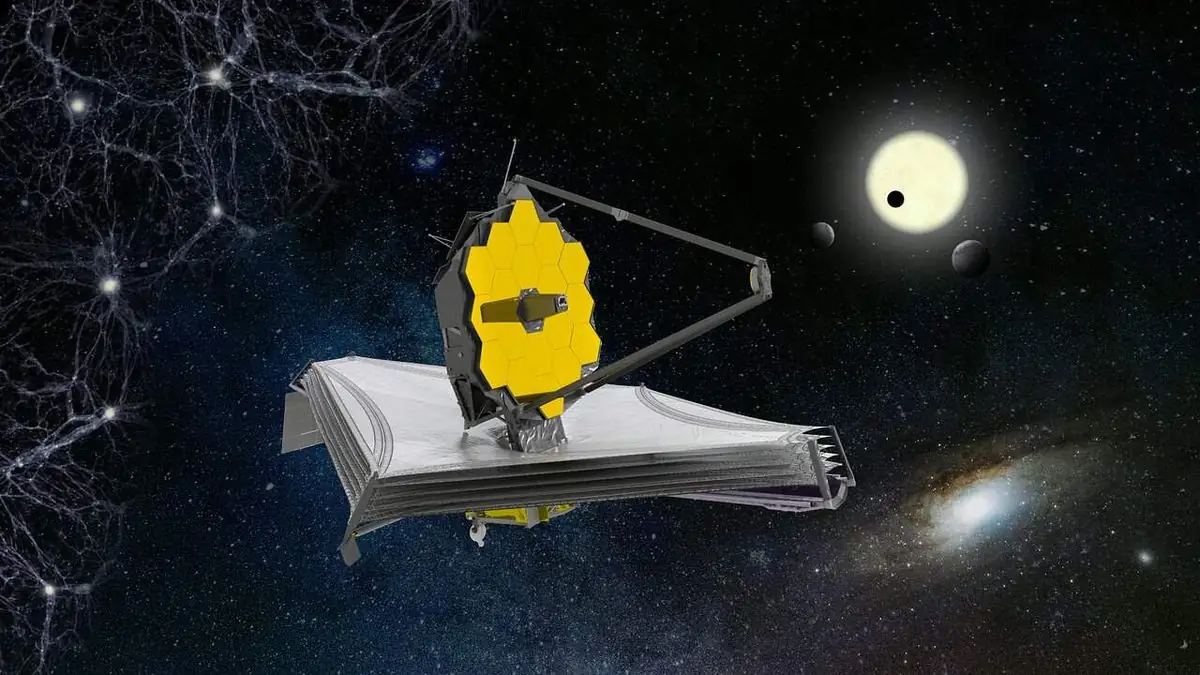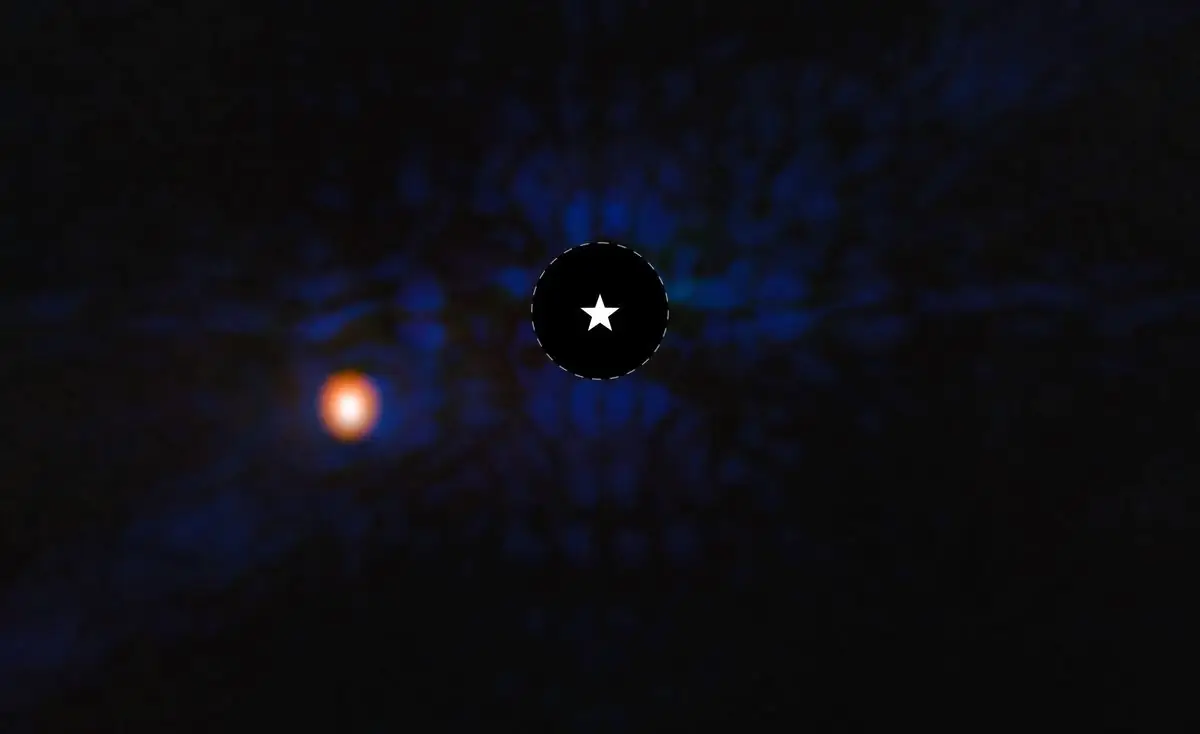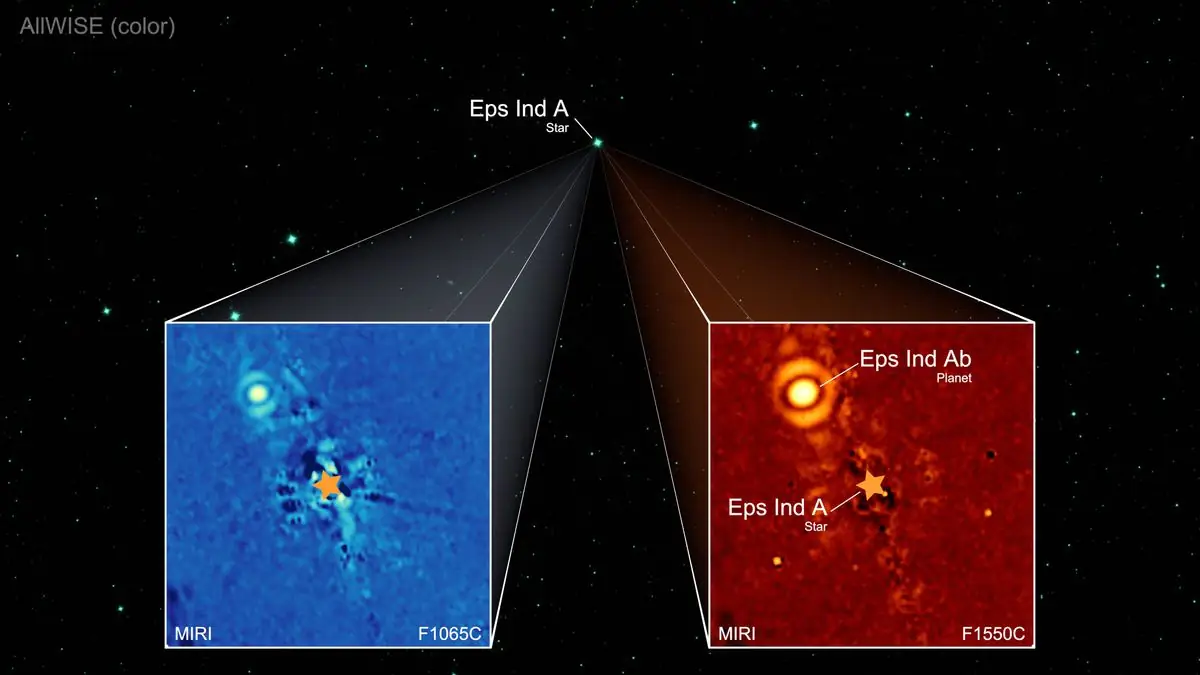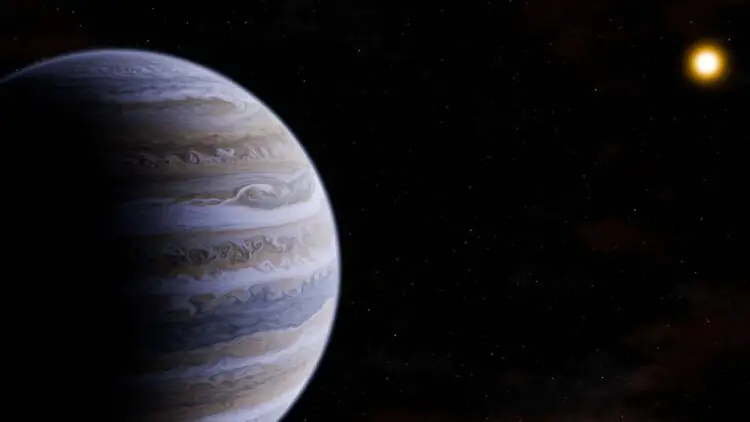The James Webb Space Telescope has captured an image of a new exoplanet orbiting a star in the nearby triple system Epsilon Indi, located 12 light-years from Earth. The planet is a cold super-Jupiter with a temperature of around 0°C and a wide orbit similar to Neptune’s orbit around the Sun.

This measurement was made possible by the unprecedented capabilities of the Webb Telescope in the thermal infrared range. Scientists are likely to discover many more planets similar to Jupiter in terms of mass, temperature, and orbit with its help.
“We were thrilled when we realized we had captured an image of this planet,” said Elizabeth Matthews, a researcher at the Max Planck Institute for Astronomy in Heidelberg. “To our surprise, the bright spot that appeared in our MIRI images did not match the position we expected. Previous studies correctly identified the planet in this system but underestimated its mass and orbital deviation.”

Fortunately, the Webb telescope helped the team understand this intriguing discovery. The new exoplanet is colder than the gas giants previously studied by the telescope. In the image, it appears as a bright spot, providing direct evidence compared to the transit and radial velocity methods. The planet orbits the main component of the triple star system, Epsilon Indi, or Eps Ind for short. The main star, a red dwarf slightly smaller and cooler than the Sun, is named Eps Ind A, and the exoplanet has been designated Eps Ind Ab.
New data from the Webb telescope confirm that this super-Jupiter has a mass six times that of “our” Jupiter. Eps Ind Ab orbits its parent star on an eccentric elliptical orbit, with its farthest point ranging from 20 to 40 astronomical units from Eps Ind A. For reference, one astronomical unit is the average distance between Earth and the Sun, approximately 150 million kilometers.
Studying planets in planetary systems enhances our understanding of planetary formation and evolution. Recent observations pave the way for discovering more of these cold gas giants. This will allow astronomers to study a new class of exoplanets and compare them with the gas giants of our Solar System.
Finding such planets with traditional methods is indeed challenging. Planets that are far from their stars are usually very cold, and their wide orbits make it difficult to detect transit signals. Measuring their signals using the radial velocity method is also tricky. In the case of Eps Ind Ab, this method led to incorrect conclusions about the planet’s properties. It takes the planet about 200 years to complete an orbit around its star, so a few years of observation are insufficient to accurately determine its orbit.
To address this, the team developed an alternative approach. They aimed to capture an image of the planet through direct visualization. Scientists used the MIRI (Mid-Infrared Instrument) camera of the Webb telescope with a coronagraph, which creates an “artificial eclipse” of the bright star.

“We detected a signal in our data that didn’t match the expected location of the exoplanet,” said Elizabeth Matthews. “The light spot in the image was not in the predicted position. However, the planet still turned out to be a giant.”
Scientists also attempted to understand the exoplanet’s atmosphere based on the available images in three colors. It was noted that the signal from Eps Ind Ab is weaker than expected at shorter wavelengths. This could indicate a significant amount of heavy elements, particularly carbon. Additionally, it might suggest that the planet has a cloudy atmosphere. However, this is just the first step toward determining the characteristics of Eps Ind Ab.
“Our next goal is to obtain spectra that will provide us with detailed insights into the planet’s climatology and chemical composition,” the team members say. “In the long term, we also hope to observe other nearby planetary systems to search for cold gas giants that might not have been discovered yet.”
Source: phys









